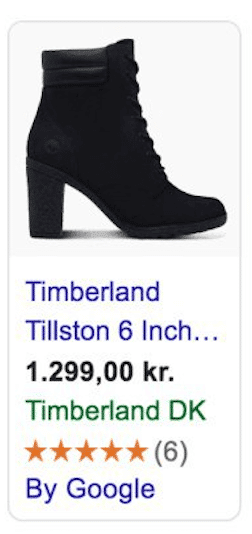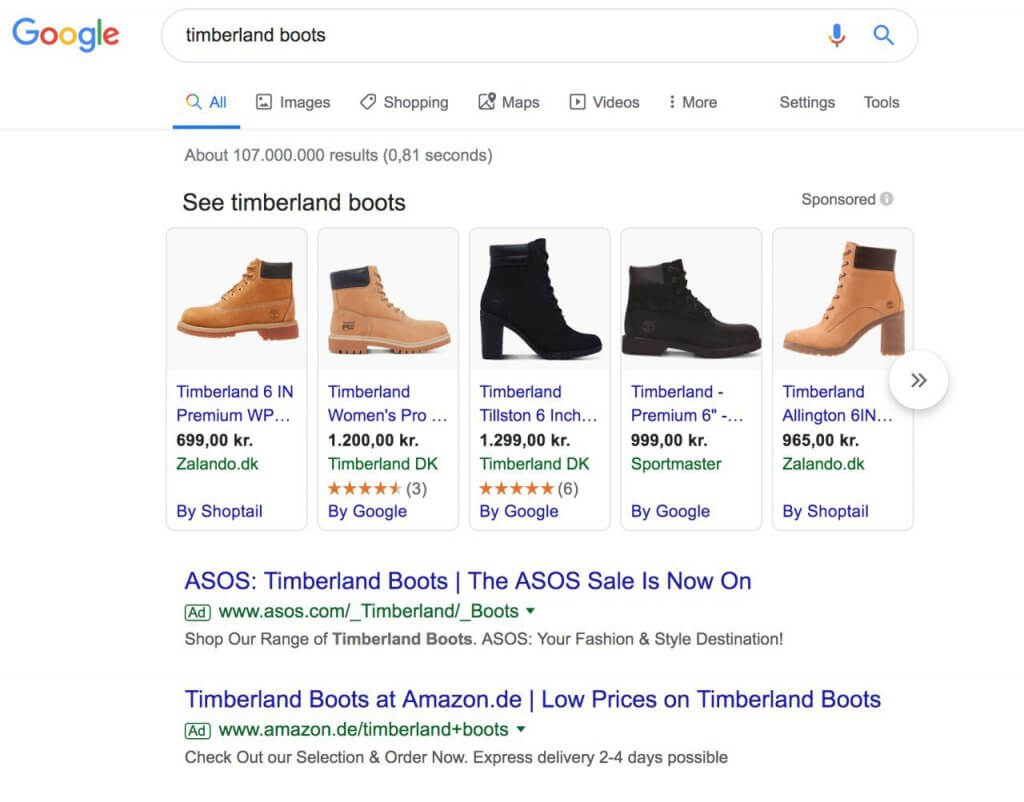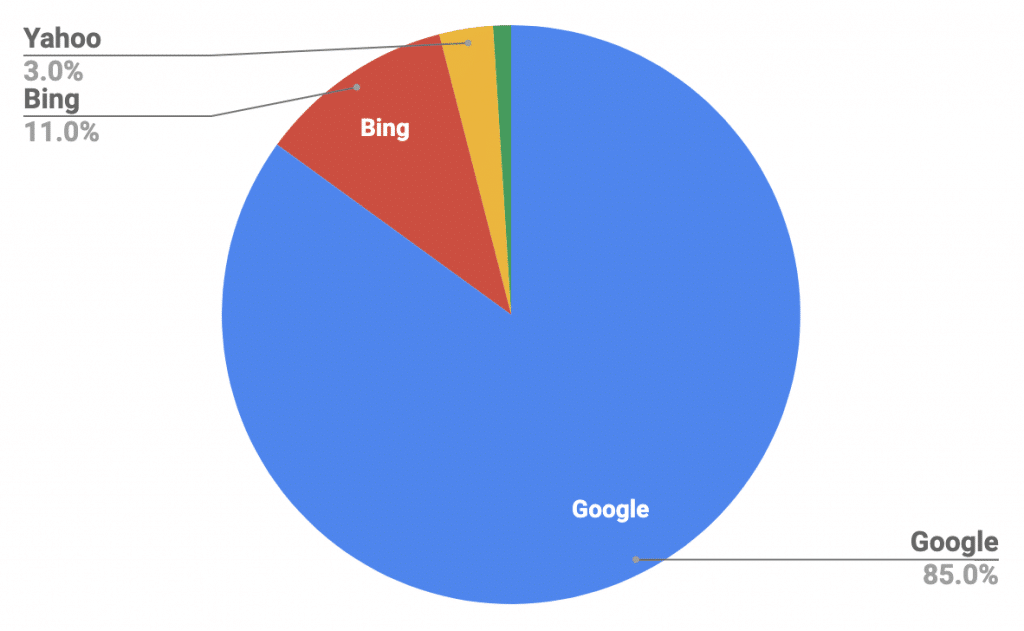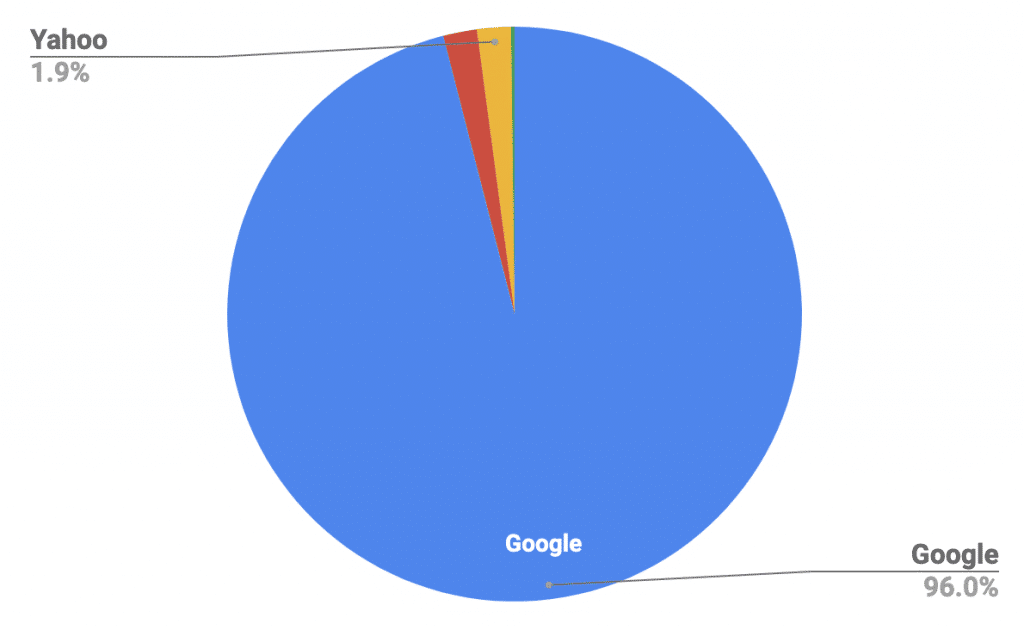Search engine landscape is ever-growing and adapting. Appearing on the first page of the SERP can make or break your business. If you’re not found online, you’re likely not found at all. This blog will explain the search engine layout with a focus on paid media and Google Ads. By the end of reading this post, you will have learned all about:
- PPC Ad Types.
- Targetting Features in PPC.
- Search Engines
- How PPC Works
- Search Jargon
PPC Ad Types
Pay-per-click advertisements are either text ads or product listing ads.
You can read about more ad formats from Google Ads here.
Text Ads
These ads contain only text and are the most common type of ads you will see on the SERP.
This is what a typical text ad looks like:

The text ad contains two headlines, a description line, and ad extensions, in this case, site links and call-out extensions. You can only show one text ad per search.
Product Placement Ad (PLA)
A product placement ad or PLA is different; it shows up for search queries relating to products.
This is how a product placement ad looks:

Notice how this ad includes an image. It is a visual ad containing the price and outlining crucial only information. Due to this layout, PLA’s tend to have higher conversion rates than the usual text ads. Moreover, you can have more than just one ad per search. With PLA’s, you can advertise multiple times for the same search query. When searching on Google, it is common to see a single advertiser has taken over all available PLA slots.
Looking at the SERP of Google, you will realize that the PLA’s are usually above the search results (including the text ads) or on the right side.

What you can target with PPC
You can bid on more than just keywords with Google Ads. There are multiple factors you can select and fine-tune your bid. For example, you can add positive or negative bid modifiers. Available variables include location, age, gender, device, time of day/week, and if a user is a first-time visitor or a returning one.
Here is a list of the main variables:
- Keyword
- Location
- Age
- Gender
- Household Income
- Parental Status
- Device
- Time of Day/Week
- In-Market Audience
- Previous Visitor
- Email Address
These bid modifiers are placed over your ad group or keyword-level bid. An example of this:
You are bidding €1 on a keyword and have set a 10% bid adjustment for people in location A. The maximum bid will be €1.10 if the user is within the selected location, where the bid will retain the normal €1 for all users outside the designated location.
PPC is different than SEO. Read more about how Search Engine Optimization and Pay-per-click complement each other here.
Search Engines
Although Google has become synonymous with Search Engine, there are a couple of other players in the market. Let us take a look at the market share in the pie chart below:

You can see that Google dominates the market by far. Meaning that there are far more people searching on Google than any other search engine. However, this also means that Google is much more competitive, and you should expect higher Cost-Per-Click (CPC) and lower Click-through-Rate (CTR). Note that this is looking at market share on desktop browsers.
Mobile traffic is even more impressive. Look at the pie chart below for the market share of search engines on mobile devices.

You quickly realize that Google has an even more significant share. Its simply because Google is more integrated into mobile devices with products like Androids. Other factors might include their better coverage and enhance the mobile experience.
How PPC works
When a user enters a search query into the search engine website, you appear in the SERP. You appear in your allocated spot based on your bid, relevance, competition, etc. Here the bidding auction starts.
Both your relevance and your bid determine your rank. They have equal weight in deciding your position in the SERP. The way Google defines relevancy depends on various algorithms and factors, but all relate to your Quality Score.
Outline of ad auction:
- On the SERP, there are 8 ad slots available, four at the top of the page, and four at the bottom.
- There is no maximum bid on Google; however, there is a minimum >€0.1
- You can determine the cost yourself; note that the more traffic you want, the higher the bid.
- You are only eligible for paying if a user clicks on your ad.
- Conversion rate and rank position are not always proportional. The first position might not generate the most conversions. However, the first two positions generate more clicks than positions three and four.
Some SEO jargon
- Search Query: the text a user types in the search field.
- Keyword: is a word or phrase that advertiser bids on.
- Text-ad: is a text-only ad on the SERP, it contains two headlines, a description line and ad extensions like site-links.
- Product Placement Ad (PLA): is a product listing, e-commerce products would be shown here, with an image, price and the retailers URL.
- Impression: one impression counts for every time your ad has been seen.
- Clicks: the number of time a user clicks on your ad.
- Average Position: this is the rank of the ad on the SERP, number 1 represents the highest rank.
- Average Cost Per Click (CPC): the price you are charged for each click.
- Click-Through Rate (CTR): this is a percentage of clicks over impressions.
- Conversion Rate: this is a percentage of conversions over clicks.
- Cost Per Acquisition/Lead (CPA/CPL): the price for generating a conversion
- Return on Investment (ROI): this is profit (revenue – cost), percentage of profit over cost.


